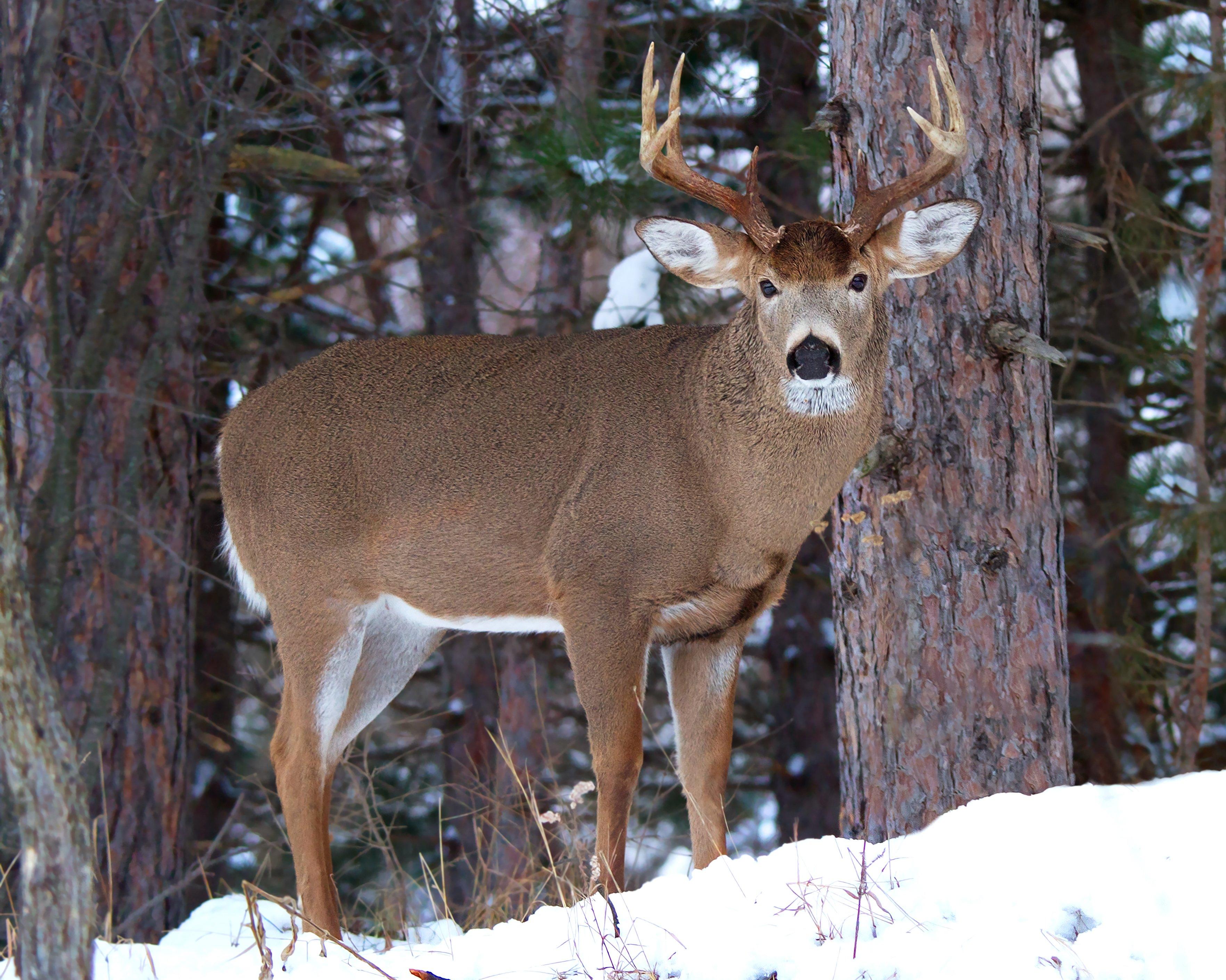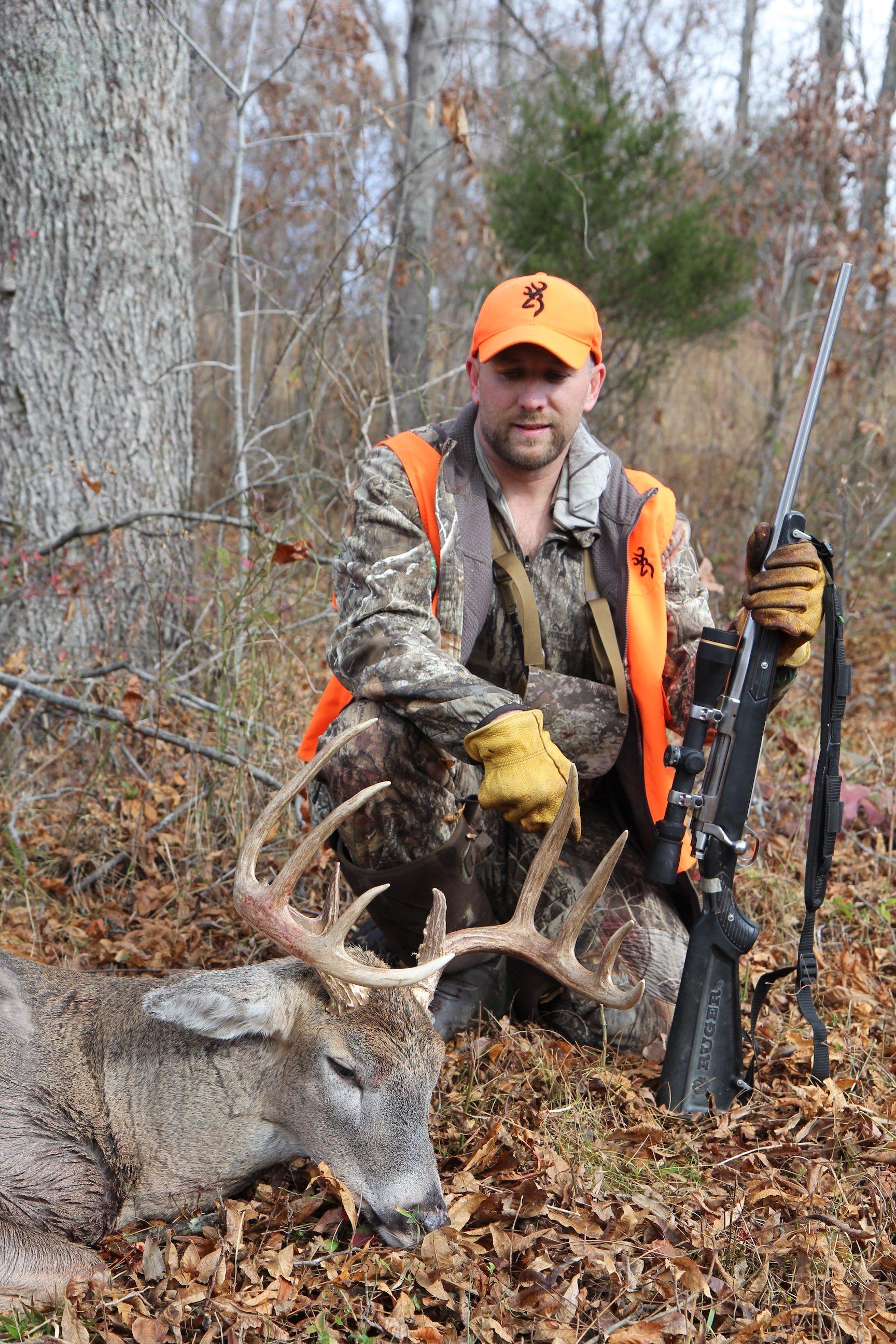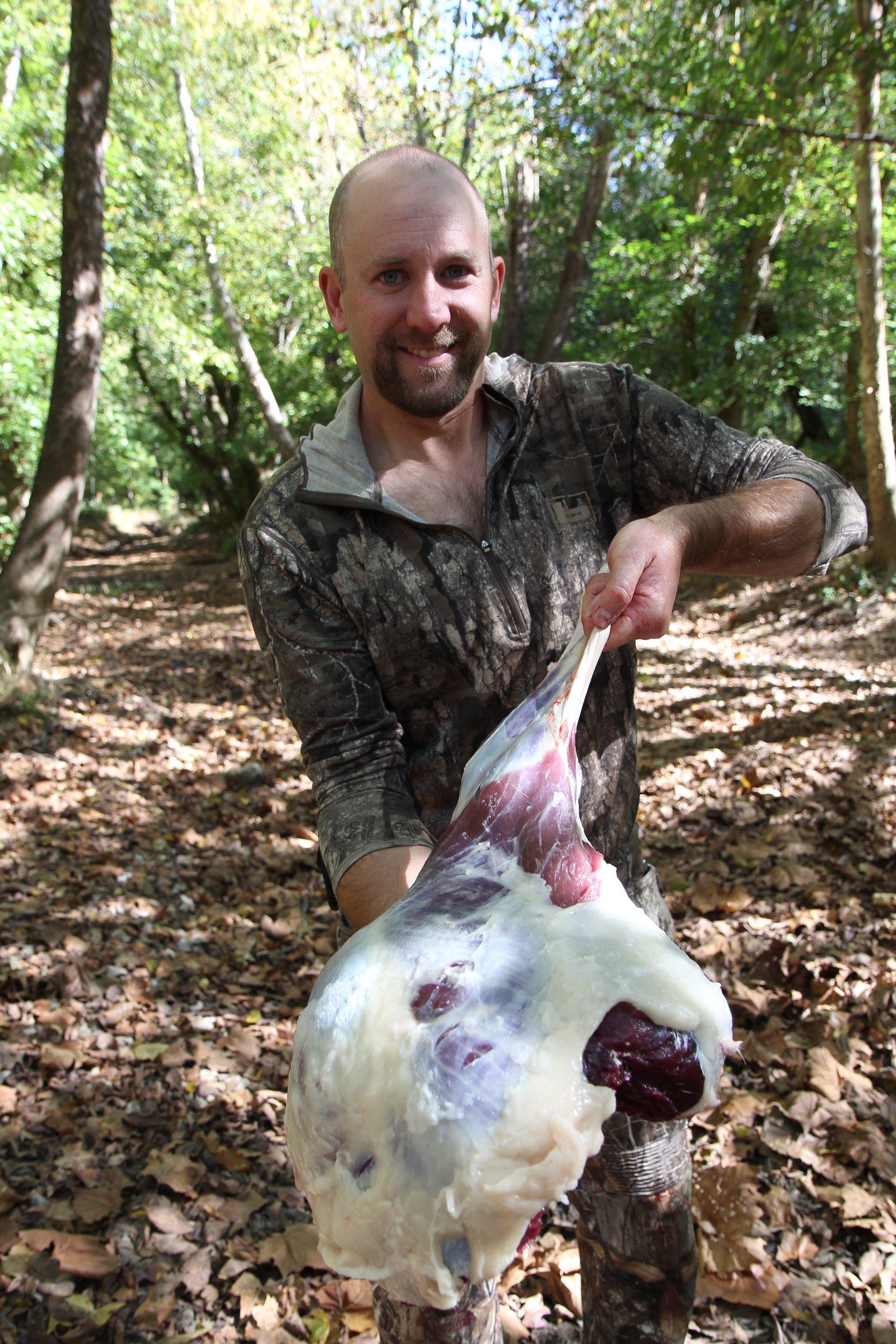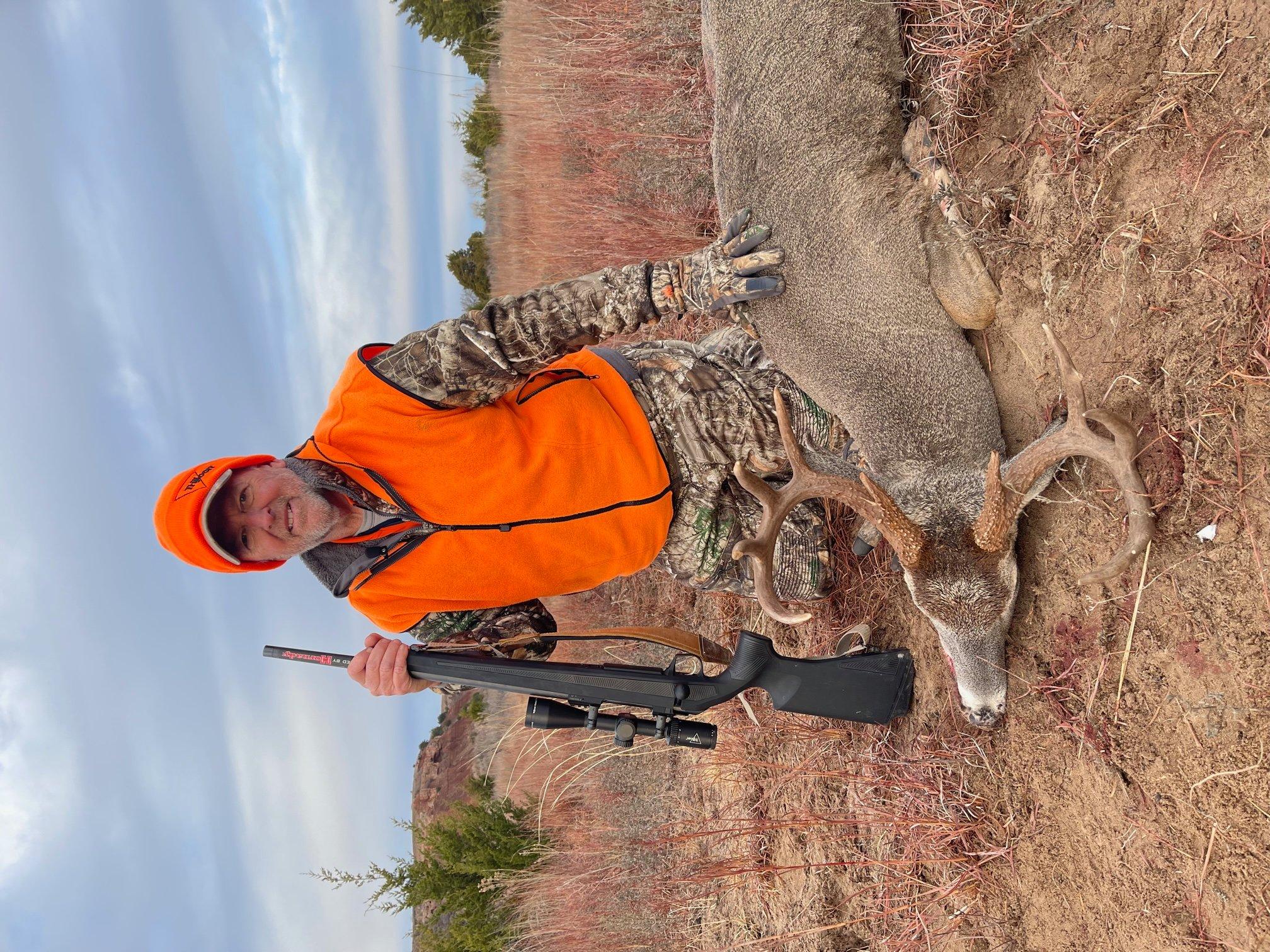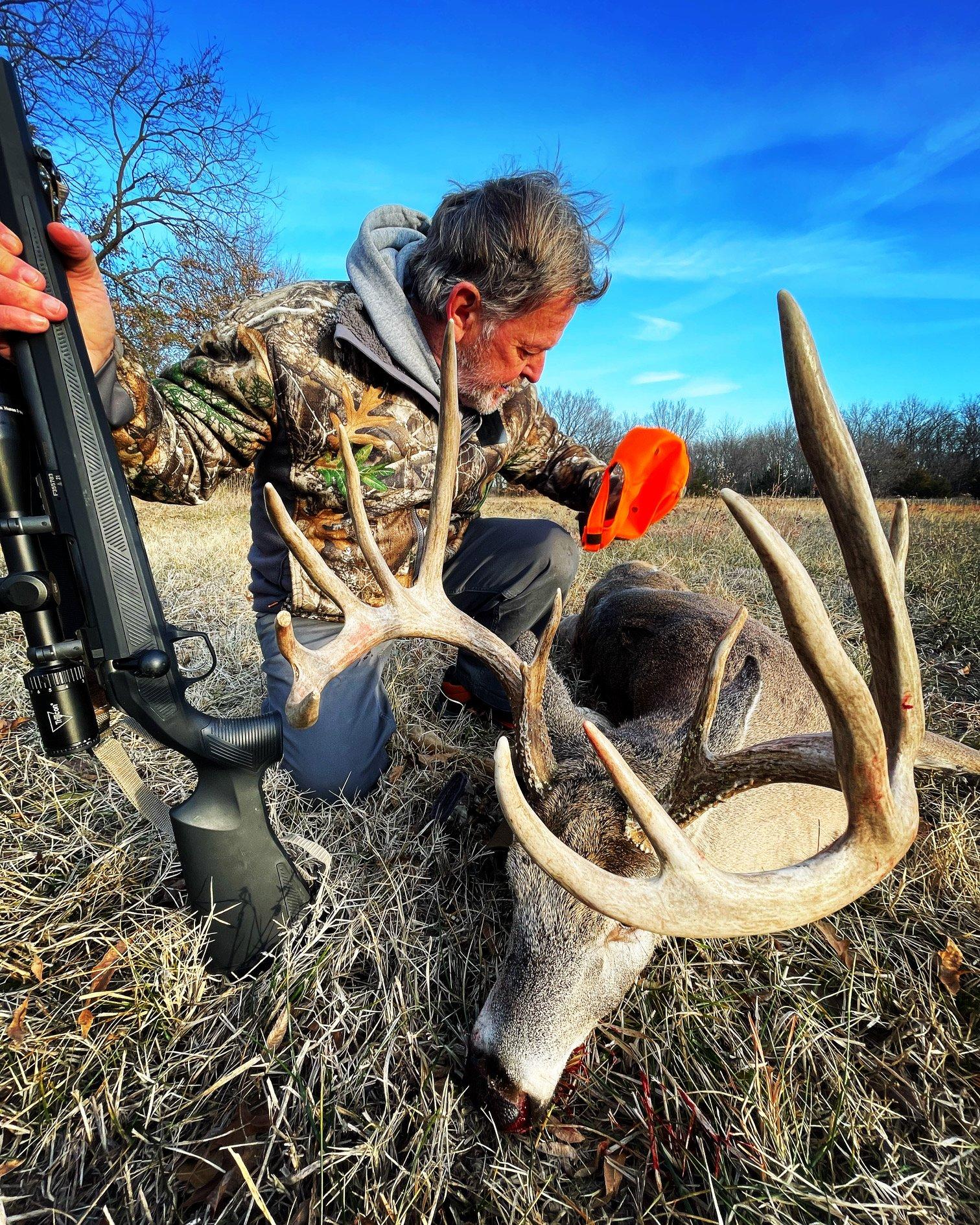The pre-rut sucked this year, scopes can get bumped, aggressive rut strategies pay off, why you should always listen to farmers, and more takeaways from the 2022 deer season
Deer season 2022 seemed to be the year of the snake bite for me — at least at first. I played cat-and-mouse with a big Kentucky 10-pointer from early September through Halloween. Not only did I not see him in 20-plus sits, but I didn't see any other bucks, either, save for a forkhorn or two and a couple of spikes. In fact, I might have hunted more days without seeing a deer during the first half of the 2022 season than I ever have before.
Boy, did that change. Kentucky's rifle season opened Nov. 12, cold and snowy, and my son, Anse, and I spent another morning watching empty hardwoods. But good things were on the horizon. The weather settled, the sun popped out, and we saw the first deer at about noon — a big doe trotting through the timber 70 yards away.
It was a parade after that. Anse shot a nice 8-pointer that chased a doe past our box blind at 2 p.m. The next morning, right after daybreak, I killed the big 10-pointer I'd been after all season. I shot him from a box blind with a rifle, but he walked right under both of the stands where I'd bowhunted him all fall.
Four days later, I killed a 13-pointer in Tennessee that's one of my biggest bucks to date. We shifted our attention to Texas in December, where I shot a mature 8-pointer early in the month, and my wife, Michelle, killed a 151-inch 10-pointer — her best buck ever — on New Year's Eve.
The slow days were easy to forget after a streak like that.
The lesson from it all is one I seem to relearn every deer season: Persistent hunting in the right spot kills big whitetails. Slumps and hot streaks are mostly in your head, and you'll have them both if you're spending the time required in the woods.
That lesson is free. But here are 10 more; five from me and five from fellow deer blogger Mike Hanback. — W.B.
(Don't Miss: 5 Giant Whitetail Buck Stories from 2022)
Always Listen to Farmers
I'd gotten to the Tennessee farm I hunt late on the morning of Nov. 17, well after daylight. It was muzzleloader season, and as I was going through the gate, I met the landowner coming out. He doesn't hunt much, but he knows every nook and cranny of his property.
I wish you'd been with me this morning, because I saw a nice one run across the pasture with a doe, he said. He pointed toward a 10-acre woodlot. They went right into that little bunch of trees.
I asked how long ago it had been since he'd seen the buck, and he said maybe 15 minutes. I debated sneaking in for a look. On one hand, the clump of trees, grazed to the dirt by goats and surrounded by cow pasture, seemed an unlikely spot for a big buck to hole up. They probably passed right through. Besides that, I didn't figure the odds were good of walking in blind and getting a shot.
On the other hand, I had a good breeze in my face, the farmer had just seen the buck, and what would it hurt? I loaded my smoke pole, donned my orange and binoculars, and slipped right into the trees, where I spotted the buck immediately, just 80 yards away with his doe. I didn't have a shot right away … but I would end up getting one.
Double-Check That Scope
I almost blew it on that Tennessee deer. I'd checked the scope on my muzzleloaders in early October, as I do every fall. But something must've happened between then and Nov. 17, because when the buck followed his doe across the pasture and gave me a standing broadside shot at 120 yards, I settled in, squeezed the trigger, and missed him clean.
Not that I'm immune to missing deer, but on that shot, I had a solid rest and had taken my time. Something wasn't right, but I was pretty sure my bullet had flown over the buck's back. Fortunately, instead of bolting toward cover, the doe trotted farther into the field, and he went right with her (there's a lesson there, guys).
I reloaded the muzzleloader and settled in again. With my second shot, I hit the buck high in the shoulder at just less than 200 yards. He dropped in his tracks, but I had to rush ahead and shoot him again. It wasn't pretty.
Back at home, I put that muzzleloader on the bench and checked its point of impact at 100 yards. It was hitting 6-plus inches high, which at least partly accounted for my poor shooting. Did I bump the gun somewhere along the way, maybe getting it in and out of the safe, or in and out of the truck? I'll never know — but it never hurts to be obsessive-compulsive about checking your scope's zero.
(Don't Miss: 20 Trail Camera Photos that Show Just How Tough Whitetails Are)
Carry a Kill Kit
With ever-changing regulations because of chronic wasting disease, it can be illegal to transport an entire deer from one county to the next — and it's almost always illegal to move an entire deer from state to state. I hunt multiple counties in Kentucky, Tennessee, and Texas every fall, and so do my wife and son. Add in some outfitting on the side, and it means I get a lot of deer cleaning practice. Anymore, I'd just as soon skin, quarter, and debone them on my tailgate or right in the field.
For that, I keep a kill kit handy. It consists of a few replaceable-blade knives (I like Hogue's new fixed-blade model with 60A scalpel blades), a good fixed-blade knife, mesh game bags, carcass tags and zip-ties, tarps, headlamps, handwipes, and a bottle of water for clean-up.
That's all standard-issue for Western mule deer or elk hunters, but it's foreign for many Eastern whitetail guys. With practice, though, you can have a deer cleaned up and in game bags in less than an hour, and most processors will cut you a deal for bringing them clean, boned-out venison. I face-cape bucks, and clean the skulls with a pressure-washer and bleach before transporting them home, where they go straight to the boiler. It's all part of the new norm for traveling whitetail hunters like me, and it probably will be for you, too, soon enough.
(Don't Miss: Sweet and Spicy Bacon Wrapped Backstrap Bites)
Go Early and Walk In
Deer get used to the sounds of vehicles, especially in Texas and other places where feeder hunting is part of the program. But during the last week of 2022, my wife was chasing a big Lone Star 10-pointer that just wouldn't show himself in daylight. I'd driven her right to the stand in the pre-dawn the two mornings prior, but no luck.
On the third morning, we decided to park the truck 3/4 mile up the trail so Michelle could hike into the blind with no flashlight. The stealthy entry worked better. She shot that buck not 15 minutes after daybreak. I'm convinced he'd been there the other two mornings, too, but had seen us drive in during darkness and never stepped out of the brush.
I still think there are times when having someone drop you off at the stand makes the best sense, especially when you have no choice but to cross an open food source in the dark. But lacing your boots and getting sneaky is still a good play.
Trail Cams Don't Tell All
You know how many photos of my Kentucky buck I got the morning I killed him? None, even though he walked right past the camera, which was working fine.
In fact, I hadn't had a picture of that deer that entire week. I'd never had a picture of the 13-pointer I shot with my muzzleloader in Tennessee, either (I figure someone on a neighboring farm is singing the blues). The only pictures I'd gotten of the 8-pointer I killed in Texas were right at dark, but I killed him when he strolled down an unexpected trail at 9 a.m. on a balmy 60-degree morning.
I rely heavily on trail cameras — maybe too much at times, because they can cause me to lose confidence based on what I'm not seeing. I know plenty of hunters who say, Nothing good on camera this year, so I've barely even hunted.
If you want my no-fail advice for never shooting a buck, just stay at home and complain about the lack of big deer out there.
HANBACK'S LESSONS
No matter how long you've been hunting whitetails, and no matter how much you think you know, a big deer will do things that will frustrate and amaze you. I've been at this game for 40 years, and nothing a mature buck does surprises me anymore. Nothing. I learn new things every season, and so should you. — M.H.
Rethink the Pre-Rut
It's the pre-rut, man, and the bucks are starting to prowl, but they're still on a bed-to-feed routine. It's one of the best times of the season to pattern and hunt a big deer.
For three decades, that was my mantra, and I wrote hundreds of how-to articles and blogs about it. But now I'm starting to wonder. The more I hunt from the middle of October through early November these days, the less overall deer movement I see during that time.
The first week of November this past season in Virginia, I had four good bowhunters in camp to film an episode of Big Deer TV. On the second morning, I caught a fleeting glimpse of a 170-inch buck we had on cam, but other than that, the best buck we saw in six days was a 3-year-old that might go 120. Not an arrow was fired. So much for getting a TV show.
It was warm all week, with highs in the 60s and 70s and lows in the 50s. All of you have experienced frustrating heat like that in recent bow seasons. I'm convinced that the rising temperatures of the past decade across the country have depressed the daylight movement of all deer and especially mature bucks during the best pre-rut weeks of late October and early November. Of course, some lucky hunters still kill giants in the pre-rut, but overall, the hunting is not as good as it was 10 years ago.
I'll still hunt the pre-rut next fall, praying for cool weather, but I plan to put more emphasis on the last two weeks of November and into the December post-rut. If you're seeing fewer bucks in the pre-rut, too, consider postponing your week of hunting vacay to, say, Nov. 15 or later.
(Don't Miss: Florida Bowhunter Tags 17-Point Buck on Public Land)
Don't Just Sit There; Do Something!
The morning of Nov. 16, I spotted flashes of a thick 10-pointer chasing a doe up and down a ridge 120 yards away. From the same lock-on the next morning, I saw him again. On the third morning, he was gone. What the heck was I thinking? I should have moved in on him sooner.
During the peak rut, if you see a big deer rutting on a faraway ridge or in creek bottom (or get pictures of him a couple of days in a row), don't just sit there and hope he'll eventually circle around by your stand. Creep in with a stand, and set up tighter to the rut zone. The buck might be gone tomorrow, but then again, he might be back, checking scrapes or hassling a doe. But one thing is for sure: He won't be around for too long. If you sit back and wait three or four days, the buck will likely leave with a doe or travel 2 miles in search of others. Your motto: When the rut is on, move in for the kill.
Hunt the Week After Thanksgiving
Late in the night of Nov. 27, I arrived in Oklahoma deer camp. Thirty minutes after sunrise on Nov. 28, I had a 140-class 10-pointer on the ground. The old buck was rutting hard, checking and pushing a half-dozen does around a grassy flat. I stopped him with a loud grunt long enough to put a 150-grain bullet into the boiler room.
At sunset two days later, hunting from the same box blind, my buddy John shot a 5-year-old buck that scored 155. You can see both hunts on Big Deer TV later this summer.
Many hunters begin to lose interest by Thanksgiving. They've hunted the better part of two months and are tired of the 4 a.m. grind. Besides, the rut is winding down, right? No. In a lot of places, big deer are rutting harder than ever.
The last week of November and into December, bucks are tired and wired but running on a last jolt of testosterone as they prowl for the last receptive does of the year. In most places, the weather has cooled down some or a lot and is ripe for deer movement. Big deer — residents and strangers — come out of the woodwork and move in daylight.
Take, for example, that 10-pointer I shot in Oklahoma. The guys on the ranch had run dozens of cell cameras every day since September but had never seen that buck. I figure the interloper had moved in from another ranch maybe 5 or 10 miles away in search of a last doe. The ranch hands had plenty of photos of John's 155-inch giant. All the images were at night, so they named the deer Phantom. Twenty minutes before sundown on chilly Nov. 30, the Phantom finally moved in daylight for the last time.
If you haven't been hunting hard the last days of November, you better change that.
(Don't Miss: The Mentality of Big-Buck Killers)
Grind It Out
On Dec. 1, I left Oklahoma and drove four hours north and east to hunt the opening week of rifle season in Kansas. I arrived to temperatures in the 60s and a 20- to 30-mph wind advisory. I could whine and cuss about the weather, or I could go hunting and hope for the best.
I hiked, sweating, a mile and climbed into a ground blind at 2 p.m. Around 4 p.m., the wind settled, and the tent stopped flapping. Two does came out and started to feed. During the next hour, six more does and a 4-pointer joined them.
With 20 minutes of legal shooting light left, I glassed deep into the tree shadows behind the does and spotted tall tines. There was no need to look longer; I knew he was a shooter. The giant ambled in like he owned the joint and checked a doe on his left, and then pushed a couple of does to his right. The second he stopped broadside, I killed him with one bullet.
No matter where you hunt, days or even weeks of unseasonably warm to hot weather are here to stay, not only in the pre-rut but also sometimes in December. Stop your complaining about it and go hunting. Some giant whitetails are killed on warm, windy days by hunters who stay positive and grind it out. I shot that 165-inch brute on one of the worst weather days of the 2022 rifle season in southeastern Kansas.
Spot a Big Buck Early
I glassed deep into the shadows behind the does and spotted tall tines …
Eighty percent of the time, a shooter buck will pop out into a field from the same general direction the does entered an hour earlier. Cast a wide view all around with your binoculars, but concentrate on the spot where most does show up early because that's where a big buck will likely pop out.
Glass hard behind and around the does and small bucks, and scour the brush and shadows for the flash of large antlers. Try to spot a big deer early, before he pops up and surprises you. That way, you can shift your body and bow or gun into position while he's at a good distance. Then you can watch the buck as he comes in, calm your nerves and get ready. Take the first good, clear shot a giant gives you. If you're tentative and tarry, a big buck is apt to get away.


